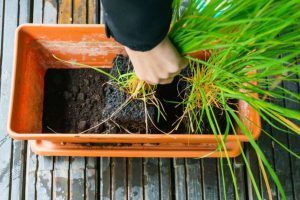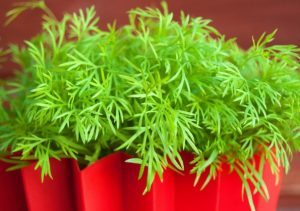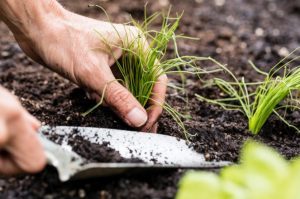In this guide, we will take you through the steps of growing bell peppers (Capsicum annuum) from start to finish. We will cover everything from choosing the right seeds and soil, to planting and caring for your peppers, and finally harvesting them at the right time.
To grow bell peppers, start by selecting a location with plenty of sunlight and well-draining soil. Plant the seeds or seedlings in the soil, about 18-24 inches apart. Water the plants regularly and fertilize them every 2-3 weeks. As the peppers grow, support them with stakes or cages to prevent them from falling over. Harvest the peppers when they reach their desired size and color.
In this post
- Growing Conditions for Bell Peppers
- How to Plant Bell Peppers
- How to Grow Bell Peppers in Pots
- How Long do Bell Peppers Take to Grow
- How Big do Bell Peppers Get
- How Much Sunlight do Bell Peppers Need
- How Much Water do Bell Peppers Need
- Fertilizing and Mulching Bell Peppers
- How to Harvest Bell Peppers
- Pest and Disease for Bell Peppers
Growing Conditions for Bell Peppers
Bell peppers are warm-season crops, thriving in hardiness zones 1 through 11. The ideal planting location provides full sun, as they need at least six to eight hours of sunlight per day. As for soil preference, bell peppers grow best in well-draining, fertile loamy or sandy soil with a pH between 6.0 and 6.8. The best time to plant is a week or two after the last spring frost, as cold temperatures can impede germination and plant growth.
How to Plant Bell Peppers
There are two common methods for planting bell peppers: direct seeding and transplanting. If you’re a beginner, I recommend starting with transplants as it is the easier method and allows for a longer growing season.
For transplanting, start your seeds indoors about 8 to 10 weeks before the last spring frost. Once the seedlings have at least two pairs of leaves, harden them off gradually before transplanting them outdoors. Space your plants 18 to 24 inches apart in rows, allowing for plenty of airflow.
How to Grow Bell Peppers in Pots
Growing bell peppers in pots is a fantastic option for those with limited garden space. Choose a pot with good drainage that’s at least 12 inches in diameter. Fill the pot with a mix of potting soil and compost, and ensure it’s kept moist but not waterlogged. Provide your potted bell pepper plant with plenty of sunlight and rotate the pot periodically for even growth.
How Long do Bell Peppers Take to Grow
Bell peppers typically take 60 to 90 days to mature from transplant. Factors such as sunlight, temperature, and consistent watering can hasten the growth, while cold temperatures and drought can delay it.
How Big do Bell Peppers Get
Bell pepper plants can grow up to 3 feet tall, with individual peppers ranging from 3 to 5 inches in size.
How Much Sunlight do Bell Peppers Need
Bell peppers love the sun! Ideally, they should get at least six to eight hours of direct sunlight each day.
How Much Water do Bell Peppers Need
Watering bell peppers can be a delicate balancing act. They need about 1 to 1.5 inches of water per week, which might mean watering every other day in hot, dry weather. Signs of overwatering include yellowing leaves and a wilted appearance, while under-watering can cause the plant to drop its flowers and fruit.
Fertilizing and Mulching Bell Peppers
Bell peppers will appreciate a balanced fertilizer or compost at planting time and again when fruits start to form. Mulching helps to conserve moisture and suppress weeds; organic mulches like straw or shredded leaves are great options.
How to Harvest Bell Peppers
Bell peppers can be harvested as soon as they reach a size you’re happy with, but letting them ripen on the plant will yield sweeter, more colorful fruits. Cut peppers off with a sharp knife to avoid damaging the plant.
Pest and Disease for Bell Peppers
Common pests of bell peppers include aphids, cutworms, and spider mites. Diseases can include bacterial spot and various wilts and rots. Keep your garden clean, rotate crops, and use organic or chemical controls when necessary. With a little vigilance and care, your bell peppers can stay healthy and productive all season long!



